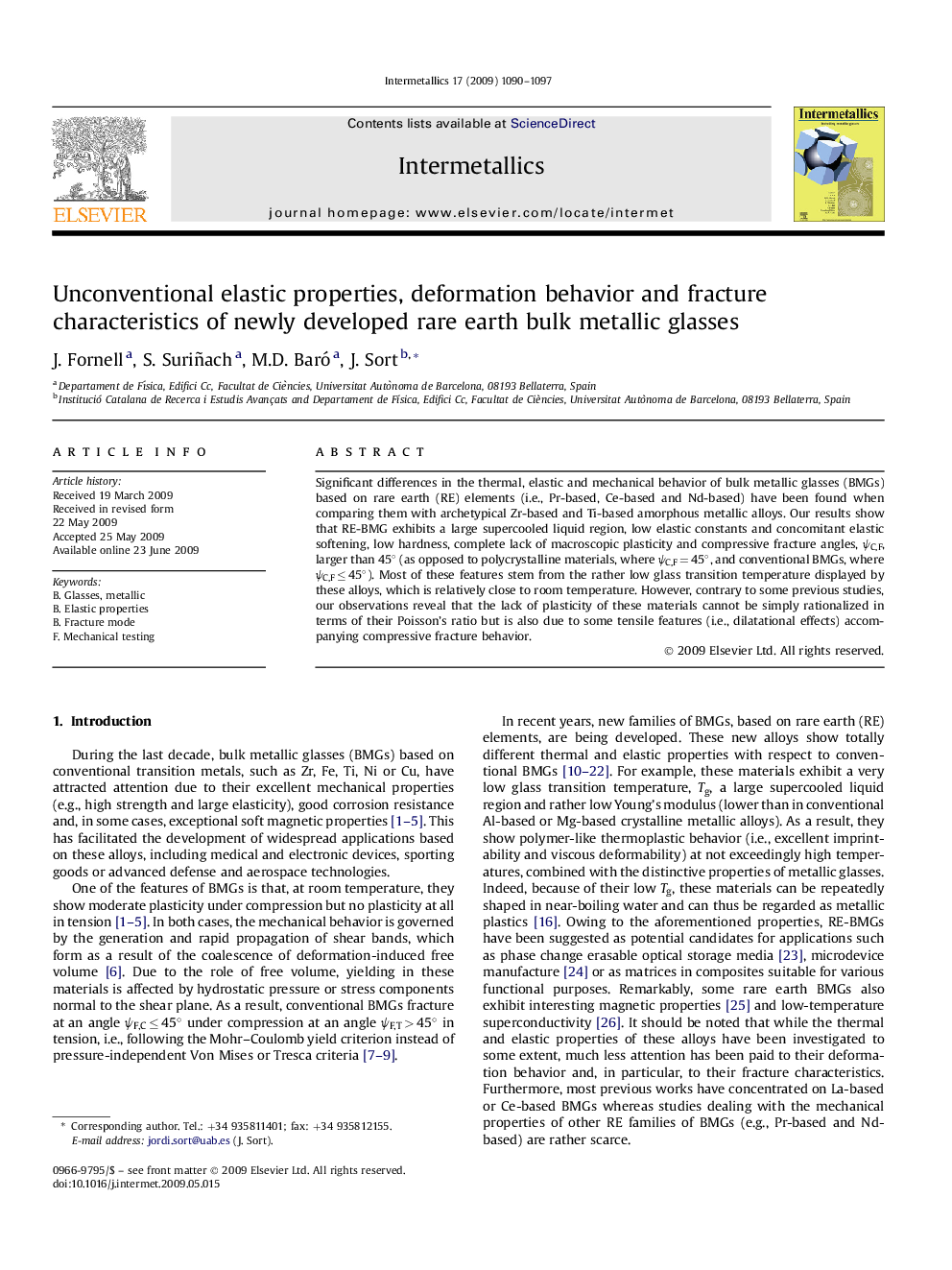| Article ID | Journal | Published Year | Pages | File Type |
|---|---|---|---|---|
| 1601292 | Intermetallics | 2009 | 8 Pages |
Significant differences in the thermal, elastic and mechanical behavior of bulk metallic glasses (BMGs) based on rare earth (RE) elements (i.e., Pr-based, Ce-based and Nd-based) have been found when comparing them with archetypical Zr-based and Ti-based amorphous metallic alloys. Our results show that RE-BMG exhibits a large supercooled liquid region, low elastic constants and concomitant elastic softening, low hardness, complete lack of macroscopic plasticity and compressive fracture angles, ψC,F, larger than 45° (as opposed to polycrystalline materials, where ψC,F = 45°, and conventional BMGs, where ψC,F ≤ 45°). Most of these features stem from the rather low glass transition temperature displayed by these alloys, which is relatively close to room temperature. However, contrary to some previous studies, our observations reveal that the lack of plasticity of these materials cannot be simply rationalized in terms of their Poisson’s ratio but is also due to some tensile features (i.e., dilatational effects) accompanying compressive fracture behavior.
